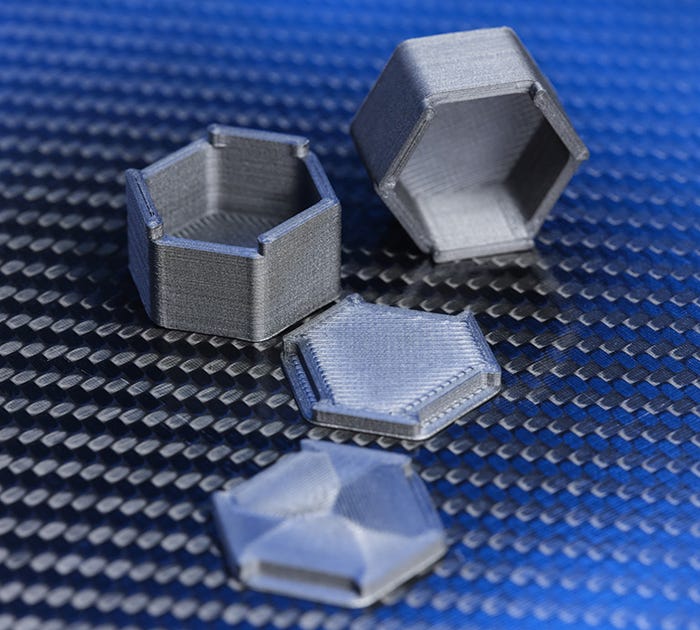The First 3D-Printed Parts Are Going to the Moon
AON3D has partnered with Astrobotic to launch hundreds of 3D-printed plastic parts into space via the Peregrine Moon Lander mission. It will be the first lunar soft landing since Apollo 17 in 1972.
September 2, 2021
When companies talk about a “moonshot,” it’s usually metaphorical. Not so at AON3D. The maker of industrial-grade 3D printers co-located in New York and Montréal has partnered with Astrobotic, whose Peregrine Moon Lander (PM1) mission is set to make the first soft landing on the moon since Apollo 17 in 1972. Hundreds of 3D-printed parts manufactured with the AON3D M2+ printer will be on board, the first additively manufactured end-use parts to touch the moon.
The lunar lander will be equipped with avionics boxes, relays, bus bars, connectors, and other components that were 3D printed in house by Astrobotic. In addition to incorporating hundreds of polymer-based fixtures and brackets replacing metal components to reduce vehicle mass, the Peregrine lander will transport MoonBoxes, the first commercial payloads delivered to the moon’s surface. The 3D-printed boxes made from high-performance materials will contain two minted cryptocurrencies, among other earthly artifacts.
|
3D-printed MoonBoxes will carry minted cryptocurrencies, among other items, on the lunar lander. |
AON3D also announced today its $11.5 million Series A funding, bringing total funding for the startup to $14.2 million. SineWave Ventures led the round with participation from AlleyCorp, Y Combinator Continuity, BDC Capital, EDC, Panache Ventures, MANA Ventures, social-media influencers Josh Richards and Griffin Johnson, and leading Silicon Valley angels. The funding will be used to invest in 3D printing R&D, continue onboarding talent, and provide clients with best-in-class support to achieve their 3D-printing needs, said the news release.
Founded in 2007, Pittsburgh-based Astrobotic Technology is dedicated to making space missions feasible and more affordable for science, exploration, and commerce. The moon, it says, is a great place to start. As such, PM1 is tentatively scheduled to launch in 2022 with 14 payloads of various types, according to NASA. Astrobotic chose the AON3D M2+ printer to produce an array of lunar hardware partly because of its capability to print light yet strong end-use parts from high-grade thermoplastics for extreme use cases, said AON3D CEO and founder Kevin Han.
Because of the mission’s objectives, potential outgassing was also an issue that influenced material selection. “NASA teams are looking for water and moisture on the surface and it would be terrible to contaminate instruments on their way through the lunar surface,” said Pete Frye, Mechanical and Fluid Systems Manager at Astrobotic. “We were careful to select materials that we were sure would not outgas — Ultem, PEEK, and PEKK.”
Being able to go from full-scale prototypes to space-ready parts all on one machine was also a big selling point. ‘We can rigorously test our parts, create custom tooling, and then go right into printing proprietary, mission-ready components with engineering-grade materials,” said Astrobotic Mechanical Engineer Clay Inman.
And size mattered, too. AON3D claims that its 3D printers have the largest build volume in the sub-$50,000 range. Moreover, “the AON M2+ offers ungated access to thousands of material options — over 50 times more than other leading 3D printers. With unlimited end-use printing opportunities, this makes AON3D an ideal partner for business of all sizes and needs — including Astrobotic’s stringent moon-lander requirements,” said the company.
Venture-backed AON3D was founded in 2015. It currently supplies printers to more than 250 customer in 25 countries; its clients include NASA, the US Air Force, Blue Origin, Solvay, and Sabic.
About the Author(s)
You May Also Like





